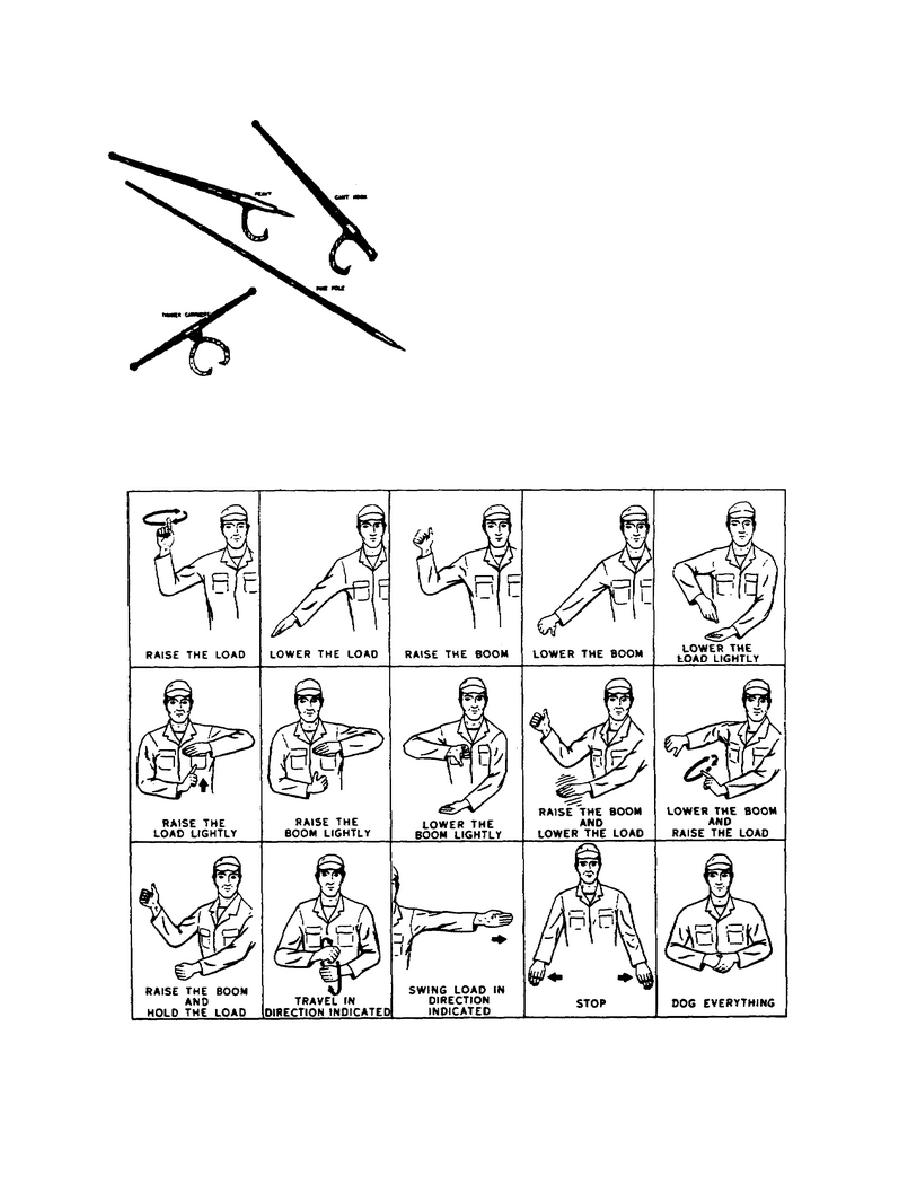
approximately 30 feet apart, and braced along the outside
row of bearing pies.
These piles usually extend about 4 feet above the floor, or
deck, of the platform. The 4-foot extension provides
ample space to secure mooring lines.
8-16. Caps and girders. Caps are large timbers which
are placed on top of the bearing piles to support pier
girders. They are secured to the piles with driftpins (steel
pins which hold timbers together). Pier girders ret on the
caps and are secured to the caps with driftpins. Girders
for wharf construction, however, may rest directly on the
bearing piles. These girder are also secured with
driftpins.
8-17. Joists. Joists are smaller timbers (like 8xl2-inch)
to which the flooring, or decking, is secured. They rest
directly on the girders and are secured to them with
driftpins. Joists are very important and should be
constructed of well-seasoned well-treated timbers.
Figure 47. Logger's tools.
8-18. Decking. Decking, or flooring, should be laid
perpendicular to the joists and secured with sixty-penny
8-15. The third type of piles, mooring, is placed in line
(60d) nails or driftpins. This deck-
with the outside row of bearing piles, spaced
Figure 48. Standard crane signals.
30



 Previous Page
Previous Page
